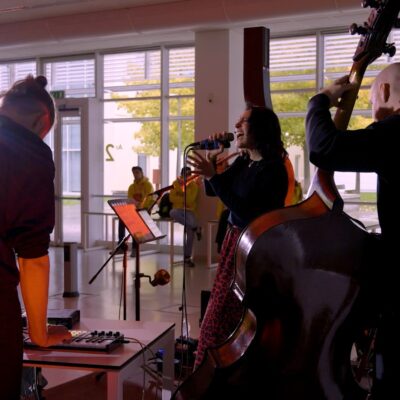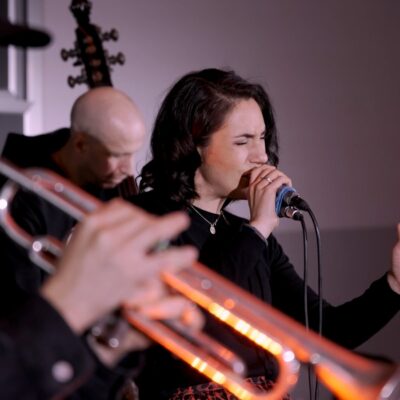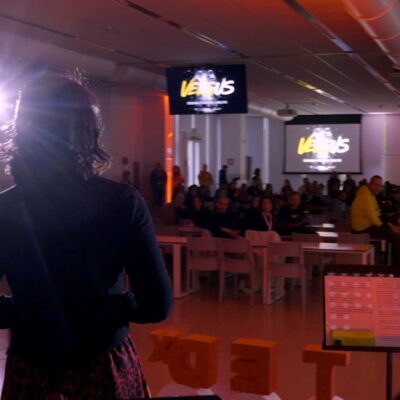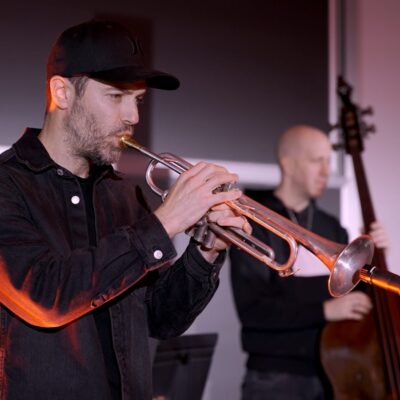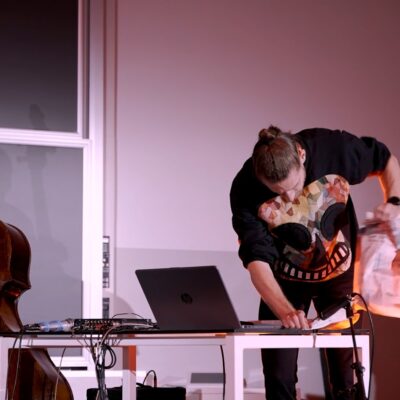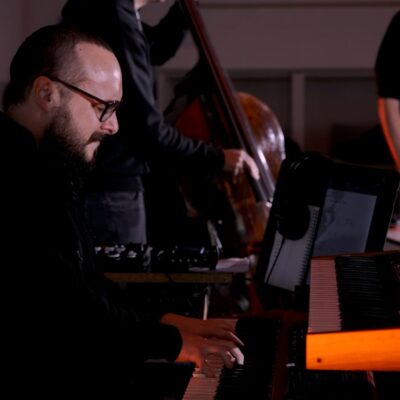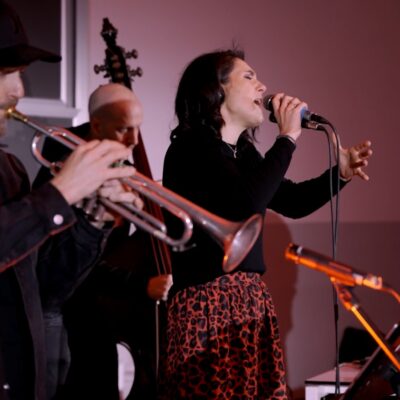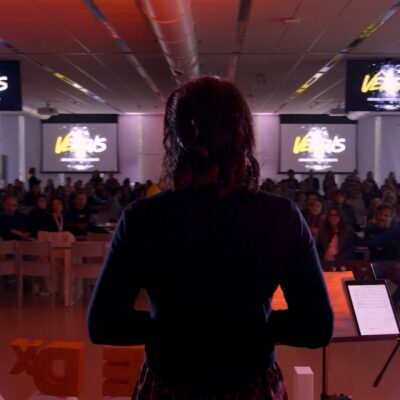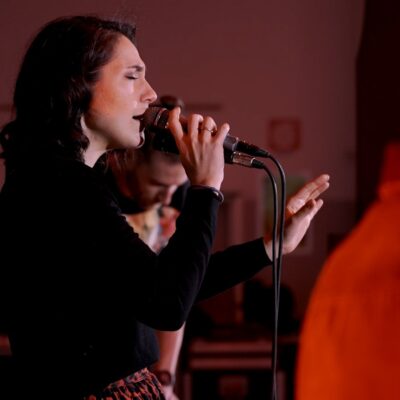TedX Lecco – L’amo(re) e la (vio)lenza
"L'amo(re) e la (Vio)lenza"
During this performance, a woman will be killed. Perhaps it will be two. The murder, of course, will not take place on stage but will likely occur in the homes of the victims: it is estimated that a woman is killed in a domestic context every 11 to 12 minutes worldwide, and the performance lasts for 15 minutes.
As a musician, I have wondered how music, in its most common form, the song, can be an expression of violence against women and when, instead, it has been a testimony of female empowerment.
Various narrative and linguistic planes intertwine throughout the composition, guiding us along the temporal axis between present and past, speaking languages both near and far, and oscillating between concrete electronic sounds, harmonious musical landscapes and moments of improvisation.
The sonic material ranges from news announcers' voices to the lyrics of national and international pop songs that are recited and decontextualized. Key elements include messages conveyed by songs of two great South American artists: Susana Baca and Mercedes Sosa. Significant emphasis is also placed on the use of technology: a microphone 'reads' a newspaper, amplifyng the sounds of TV news, while artificial intelligence recites the lyrics of musical pieces. The use of a vocoder (an instrument capable of harmonizing a single voice across multiple voices) is also symbolic: just as the singer's voice becomes a chorus, the story told is the story of many women.
There is no pretense of providing answers, but the intention is to shed light on questions, encouraging the audience towards a more aware and critical listening of songs. While it is undeniably the right of an author to write whatever they want, it is equally true that the success of a song depends on the audience willing to listen to and support it. Music, with its lyrics, rituals, and subcultures, is merely a reflection of the society that generates and listens to it.
“L'Amo(re) e la (Vio)Lenza” aims to be a tribute to lost lives and a call for change, a praise for music and art as a form of healing, testimony, and social change.
Part 1
In the introductory part, the emphasis is placed on reality and facts. Femicide is almost always discussed after the event occurred. Newspapers, news broadcasts, and radios are the media through which the event is reported, then mediated, diminished, exaggerated, polluted, and dissected in every detail in what is referred to as the "pornography of pain".
Through a live electronics system, the sound of newspapers on stage is captured by a microphone and transformed into the voices of news announcers taken from news broadcasts worldwide.
PART 2. HECES – Susana Baca
The performance intertwines with two songs by two leading figures in South American music, symbols of racial struggle and women's emancipation: Susana Baca and Mercedes Sosa.
In the first song, 'Heces,' whose lyrics are taken from a poem by Jorge Eduardo Eielson, I wanted to give a testimony of the pain experienced by those who suffer discrimination and violence. It is undoubtedly the darkest moment of the performance. At this link you can listen to the original version of the song.
This afternoon is sweet.
Why shouldn't it be?
It is dressed in grace and pain.
It is dressed as woman
This afternoon in Lima it's raining. And I remember
The cruel caverns of my ingratitude
A block of ice above your poppy flower
Stronger than your "Don't be like that!"
My violent black blooms
And the savage stone, and frozen distances.
And your silent dignity
Will put an end with burning oils
PART 3
In this section of original music, we shift our focus to the Western musical context. I wanted to play with contrasts to decontextualize certain song lyrics recited here by the singer in Italian and by the artificial intelligence in English. The music conveys an intimate mood, and the reading of the lyrics suggests a moment of lyrical elevation. However, the content of the lyrics feels like a gut punch: lyrics written by males, recited by a female voice, stripped of their melody, now present in their misogynistic essence. These are lyrics from well-known songs that have entered the popular repertoire, sung at parties, festivals, and karaoke: judgment is left to the listener.
PART 4. COMO LA CIGARRA – Mercedes Sosa
In the last part of the performance we return to give voice to a South American woman. It's the turn of another "survivor": Mercedes Sosa. She is the interpreter who made this song by Maria Elena Walsh known to the world. Here an execution of the song in its original version. The song is an anthem to the strength of those who manage to survive and redeem themselves, a celebration of music and singing as a form of retaliation against suffering and injustice. That's why the final part of the performance leads to an improvisation where the voice takes center stage. It may seem like a too joyful direction given the topic at hand, but the theme of the TEDx event was contrast (and its resolution). The question I wanted to suggest is precisely this: how is it possible to bring light into the darkest spaces of existence? Perhaps the answer is suggested by music itself.
"So many times I was killed
many times I died
none the less I'm still here, coming back to life.
I'm gratefull to adversity
and the hand holding the knife
for it did a bad job at killing me
And I carried on singing.
Singing to the sun like the cicada does
after a year under the ground
like a survivor
who is coming back from war
Description
TedX Lecco
performance musicale by S.Fumagalli for TedX Lecco 2023.
Music by:
S.Fumagalli, F.Spreafico, E.Maggioni, S.Baca, M.Sosa.
Musicians
Federica Spreafico – Voce
Stefano Fumagalli – Elettronica
Edoardo Maggioni – Tastiere
Francesco Carcano – Basso
Andrea Baroldi – Tromba
Recorded live at Politecnico di Lecco on november 4th 2023 da Nicola Rota (video) e Dario Galbusera (audio).
Montaggio Video: Nicola Rota.
Mix e master audio: Stefano Fumagalli presso HDstudio

